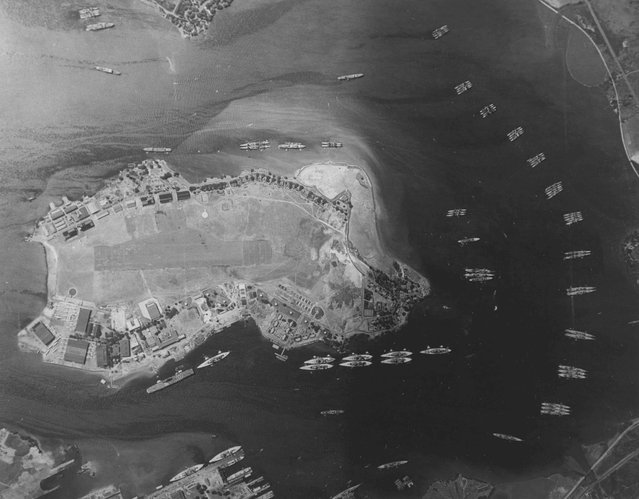
An aerial photograph taken the year before the Japanese raid shows the East Loch and the the Fleet Air Base on Ford Island in Pearl Harbor, Hawaii, U.S. May 3, 1940. Visible are the carrier Yorktown, ten battleships, seventeen cruisers, two light cruisers, and over thirty destroyers. The 75th anniversary of the attack, which brought the United States into World War Two, is marked on December 7, 2016. (Photo by Reuters/U.S. Navy/National Archives)
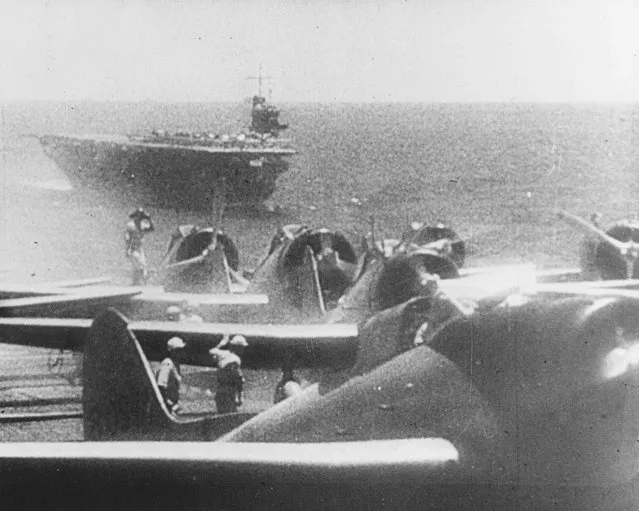
Japanese Navy Type 99 Val carrier bombers prepare to take off from an aircraft carrier to attack Pearl Harbor, Hawaii, U.S. December 7, 1941. The ship in the background is the carrier Soryu. (Photo by Reuters/U.S. Navy/National Archives)
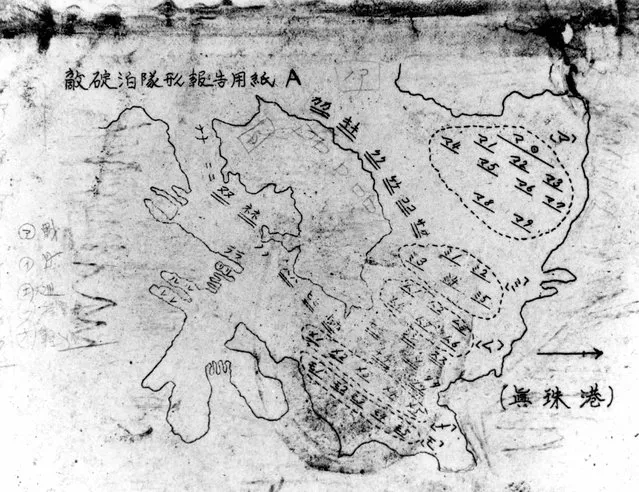
A chart identifying ship mooring locations and entitled (at upper left) “Report on positions of enemy fleet at anchorage”, is seen after it was recovered from a Japanese aircraft that was downed during the attack on Pearl Harbor, Hawaii, U.S. December 7, 1941. (Photo by Reuters/U.S. Navy/National Archives)

An officer on the Japanese aircraft carrier Shokaku watches as planes take off to attack Pearl Harbor, Hawaii, U.S. December 7, 1941. The Kanji inscription at left is a commander order to pilots to do their duty to destroy (the enemy). (Photo by Reuters/U.S. Navy/National Archives)
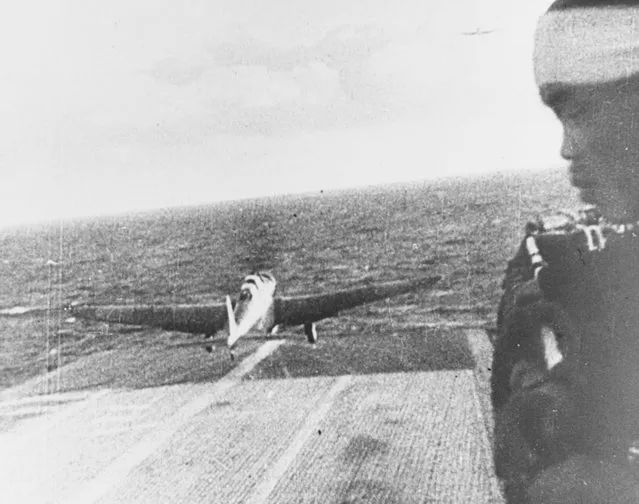
A Japanese Navy Type 97 Kate carrier attack plane takes off from the aircraft carrier Shokaku, en route to attack Pearl Harbor, Hawaii, U.S. December 7, 1941. (Photo by Reuters/U.S. Navy/National Archives)
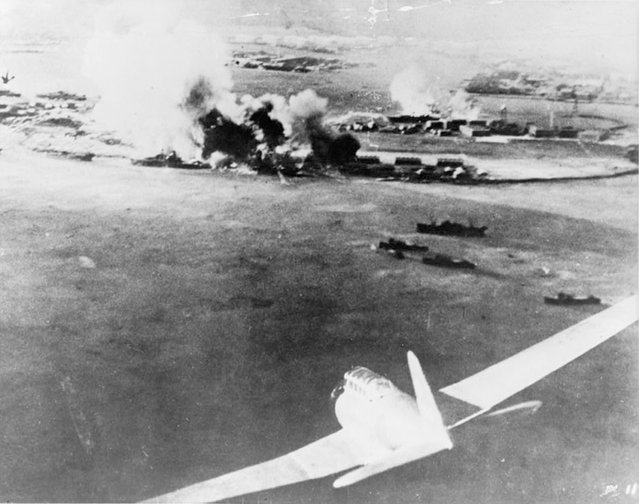
A Japanese bomber aircraft is seen in the foreground of an aerial photograph taken by a Japanese pilot during the attack on Pearl Harbor, Hawaii, U.S. December 7, 1941. (Photo by Reuters/U.S. Navy/NEA Services)
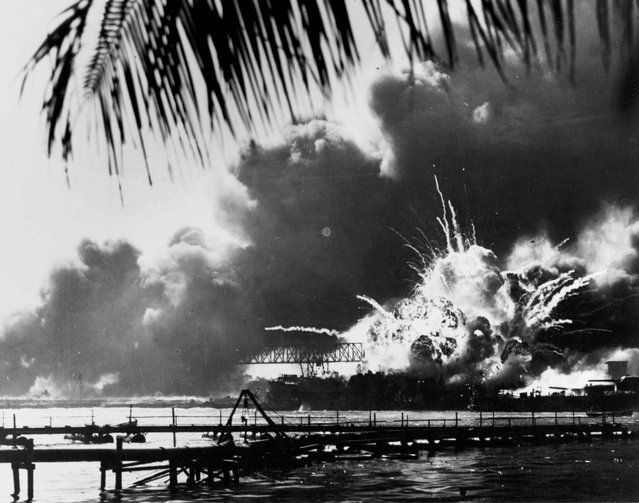
The forward magazine of the destroyer USS Shaw explodes during the second Japanese attack wave on Pearl Harbor, Hawaii, U.S. December 7, 1941. (Photo by Reuters/U.S. Naval History and Heritage Command)
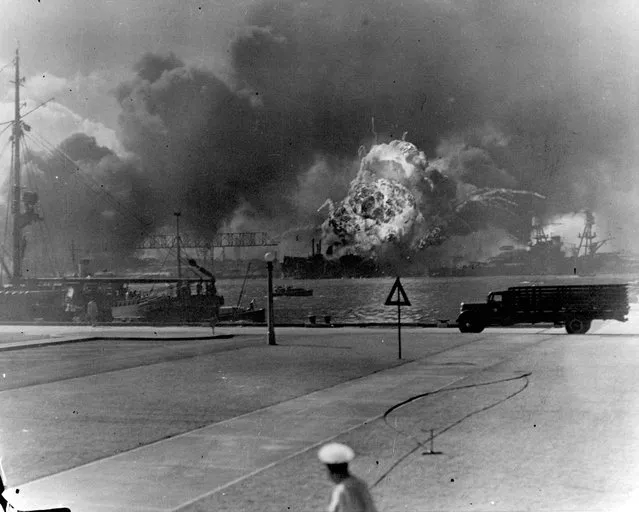
The forward magazines of the destroyer USS Shaw explode after a bombing attack by Japanese planes on Pearl Harbor, Hawaii, U.S. December 7, 1941. (Photo by Reuters/U.S. Naval History and Heritage Command)
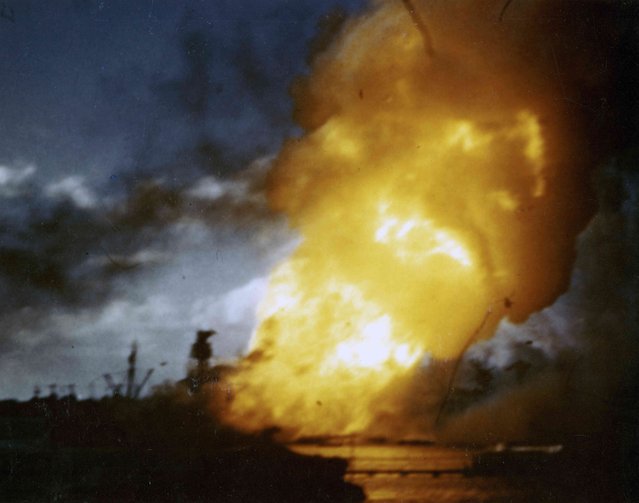
The battleship USS Arizona burns, immediately following the explosion of her forward magazines, during the Japanese attack on Pearl Harbor, Hawaii, U.S. December 7, 1941. The still image is from a color motion picture taken on board the hospital ship USS Solace. (Photo by Eric Haakenson/Reuters/U.S. Navy/National Archives)
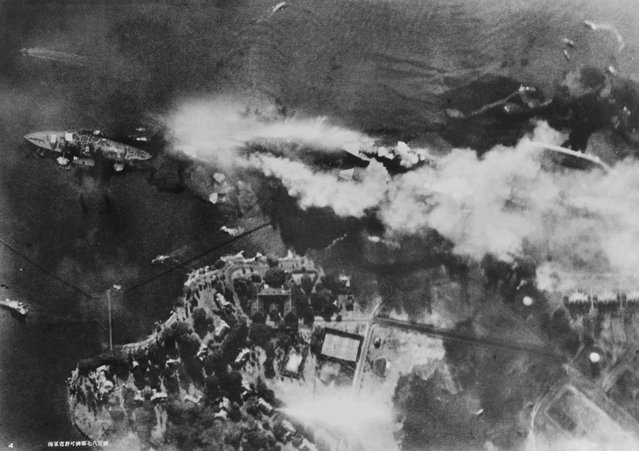
The battleship USS Arizona burns on Battleship Row, beside Ford Island in an aerial photo taken from a Japanese aircraft during the attack on Pearl Harbor, Hawaii, U.S. December 7, 1941. Ships seen are (L-R) USS Nevada, USS Arizona with USS Vestal moored outboard, USS Tennessee with USS West Virginia moored outboard and USS Maryland with USS Oklahoma capsized alongside. (Photo by Reuters/U.S. Naval History and Heritage Command)
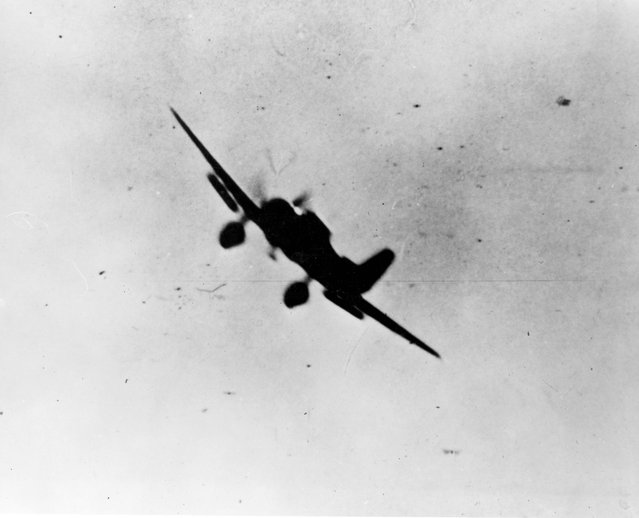
A Japanese Navy Type 99 Val carrier bomber is seen in action during the attack on Pearl Harbor, Hawaii, U.S. December 7, 1941. (Photo by Reuters/U.S. Navy/National Archives)
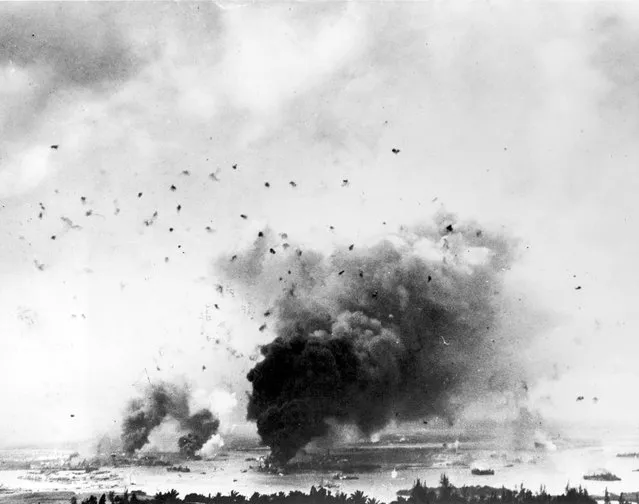
Flak bursts of anti-aircraft shells pepper the skyline above rising smoke from the battleship USS Arizona during the Japanese raid on Pearl Harbor, Hawaii, U.S. December 7, 1941. (Photo by Reuters/U.S. Navy/National Archives)
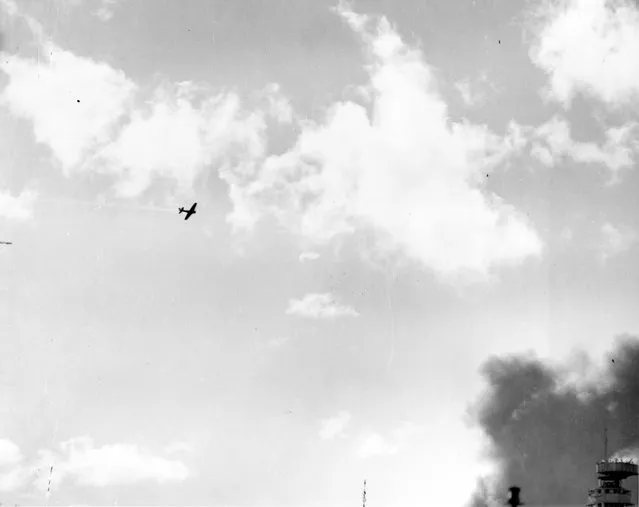
A Japanese Type 00 (Zero) carrier fighter trails smoke after it was hit by anti-aircraft fire during the attack on Pearl Harbor, Hawaii, U.S. December 7, 1941. (Photo by Reuters/U.S. Navy/National Archives)
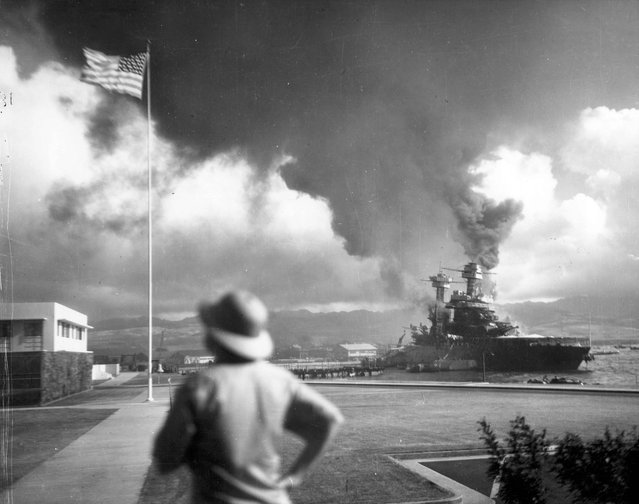
The damaged battleship USS California, listing to port after being hit by Japanese aerial torpedoes and bombs, is seen off Ford Island during the attack on Pearl Harbor, Hawaii, U.S. December 7, 1941. (Photo by Reuters/U.S. Navy/National Archives)
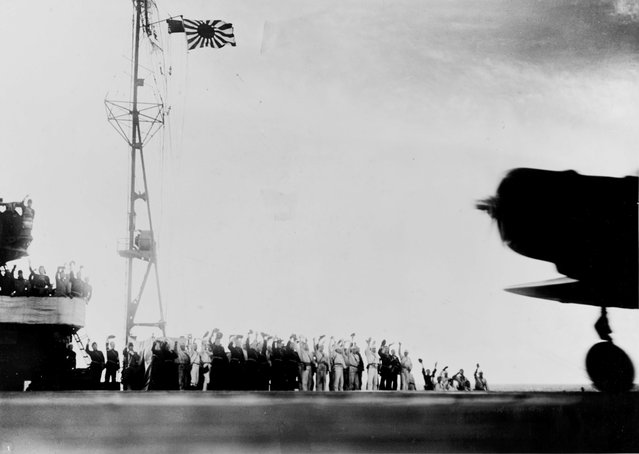
The crew of the Japanese carrier Shokaku cry Banzai as a Type 97 Kate carrier attack plane takes off as the second wave attack is launched on Pearl Harbor, Hawaii, U.S. December 7, 1941. (Photo by Reuters/U.S. Navy/National Archives)
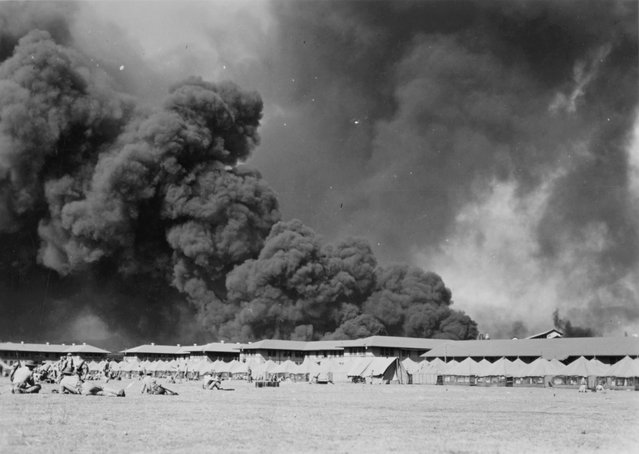
U.S. Marines await the possible return of Japanese aircraft on the parade ground at the Pearl Harbor Marine Barracks, Hawaii, U.S. December 7, 1941. (Photo by Reuters/U.S. Naval History and Heritage Command)
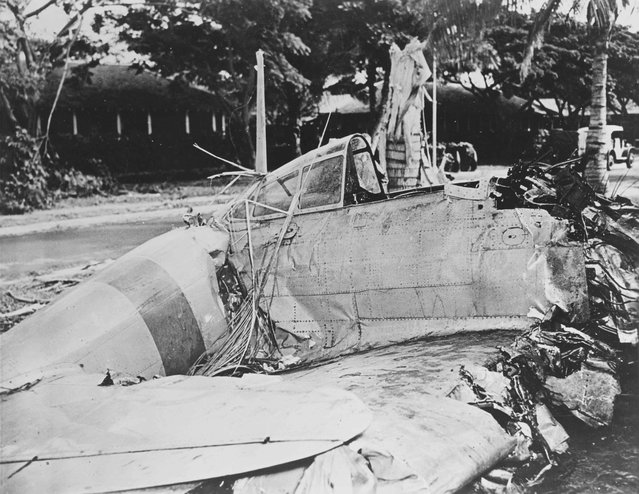
A Japanese Type 00 (Zero) fighter with markings from the carrier Akagi is seen after it crashed during the attack at Fort Kamehameha, near Pearl Harbor, Hawaii, U.S. December 7, 1941. (Photo by Reuters/U.S. Navy/National Archives)
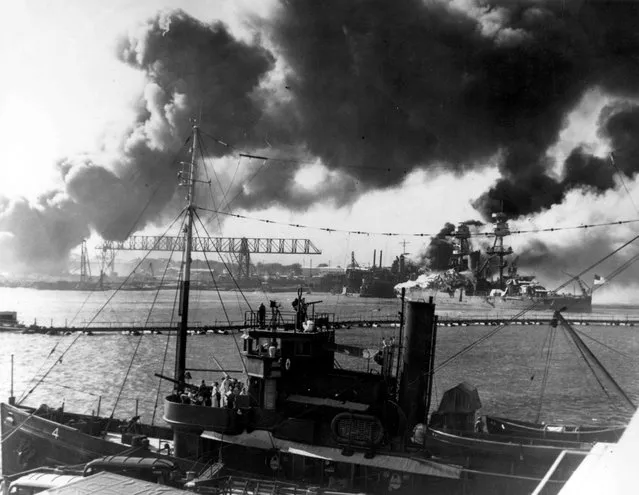
Gunners on board the minesweeper USS Avocet look for more Japanese planes, at about the time the air raid ended on Pearl Harbor, Hawaii, U.S. December 7, 1941. (Photo by Reuters/U.S. Navy/National Archives)
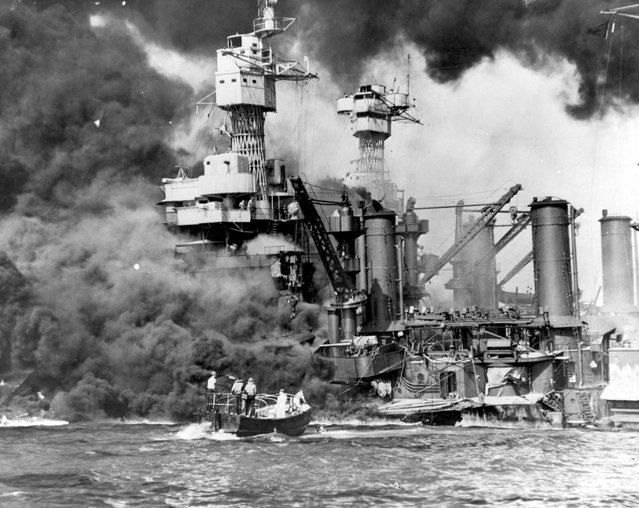
Sailors in a motor launch rescue a survivor from the water alongside the sunken battleship USS West Virginia during or shortly after the Japanese air raid on Pearl Harbor, Hawaii, U.S. December 7, 1941. (Photo by Reuters/U.S. Navy/National Archives)
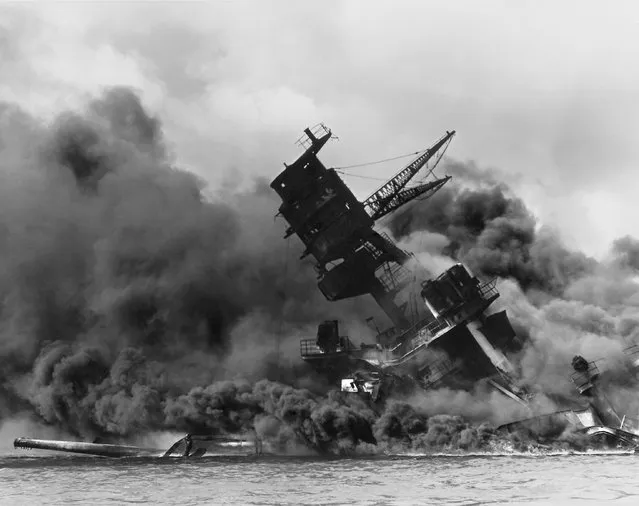
The forward superstructure of the sunken battleship USS Arizona burns after the Japanese raid on Pearl Harbor, December 7, 1941. (Photo by Reuters/U.S. Naval History and Heritage Command)
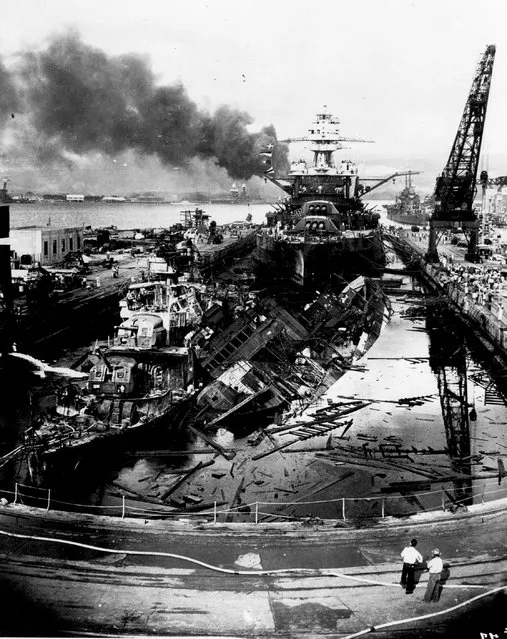
The destroyers USS Downes and USS Cassin lie wrecked in Drydock One ahead of the battleship USS Pennsylvania soon after the end of the Japanese air attack on Pearl Harbor, Hawaii, U.S. December 7, 1941. The 75th anniversary of the attack, which brought the United States into World War Two, is marked on December 7, 2016. (Photo by Navy Photographer's Mate Harold Fawcett/Reuters/U.S. Navy/National Archives)
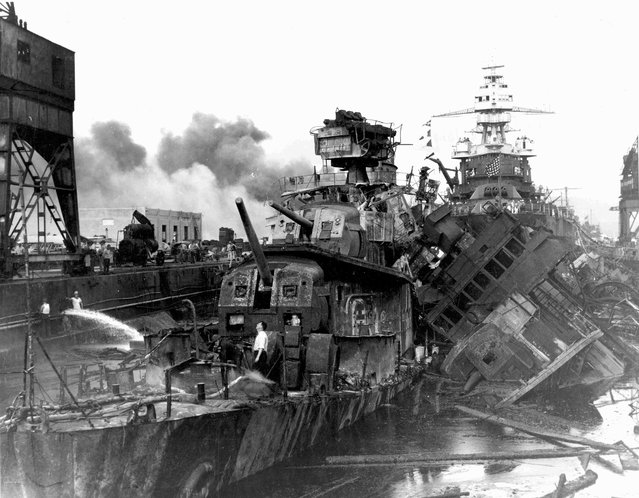
The destroyers USS Downes and USS Cassin lie wrecked in Drydock One ahead of the battleship USS Pennsylvania soon after the end of the Japanese air attack on Pearl Harbor, Hawaii, U.S. December 7, 1941. (Photo by Reuters/U.S. Navy/National Archives)

Sailors attempt to save a burning PBY amphibious aircraft at during the Japanese raid on Naval Air Station Kaneohe Bay, Hawaii December 7, 1941. (Photo by Reuters/U.S. Naval History and Heritage Command)
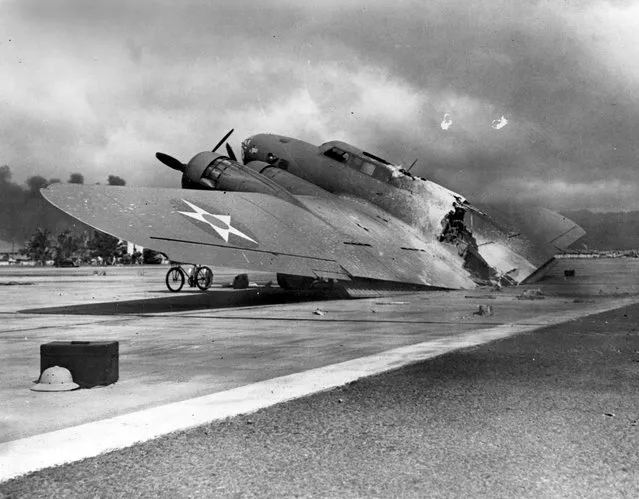
A wrecked U.S. Army Air Corps B-17C bomber lies at Hickam Air Field, following the end of the Japanese raid on Pearl Harbor, Hawaii, U.S. December 7, 1941. This plane, piloted by Captain Raymond T. Swenson, was one of those that arrived during the raid after flying in from California. It was hit by a strafing attack after landing and burned in half. (Photo by Reuters/U.S. Navy/National Archives)

The body of a sailor killed during the Japanese air attack at Naval Air Station Kanoehe Bay lies on the shoreline, at Pearl Harbor, Hawaii, U.S. December 7, 1941. (Photo by Reuters/U.S. Navy/National Archives)
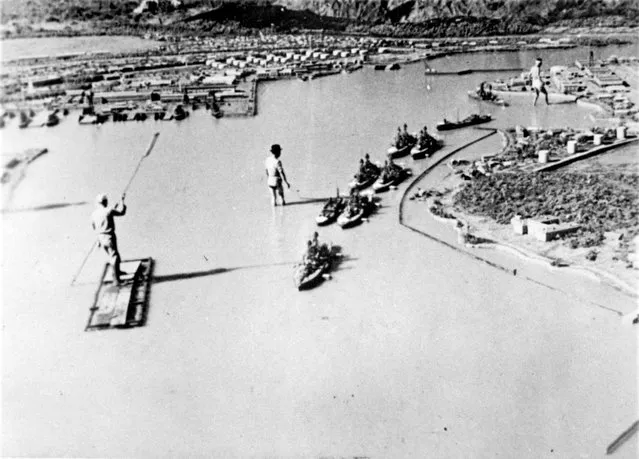
A model made for a Japanese propaganda film on the Pearl Harbor raid, showing ships located as they were during the December 7, 1941 attack, is seen in a photograph which was brought back to the U.S. from Japan at the end of World War II by Rear Admiral John Shafroth. (Photo by Reuters/U.S. Naval History and Heritage Command)

Ship's Chief Petty Officers listen to the radio broadcast of President Franklin D. Roosevelt's address to the Congress requesting a declaration of War against the Axis powers, December 8, 1941. Note the photograph of President Roosevelt on the bulkhead. (Photo by Reuters/U.S. Navy/National Archives)
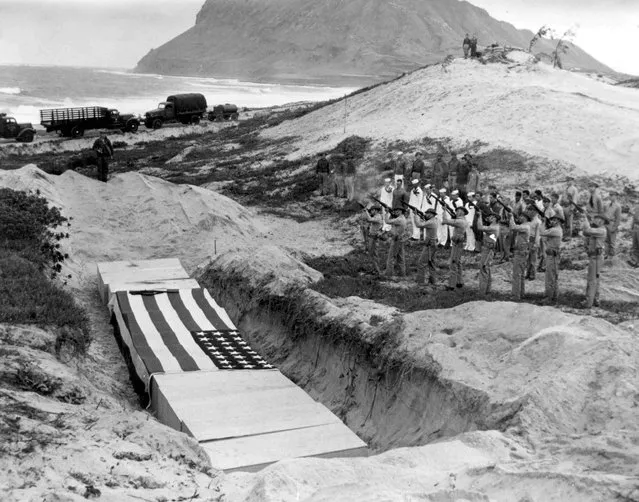
A Marine rifle squad fires a volley over the bodies of fifteen officers and men killed at Naval Air Station Kanoehe Bay during the raid the previous day at Pearl Harbor, Hawaii, U.S. December 8, 1941. (Photo by Reuters/U.S. Navy/National Archives)
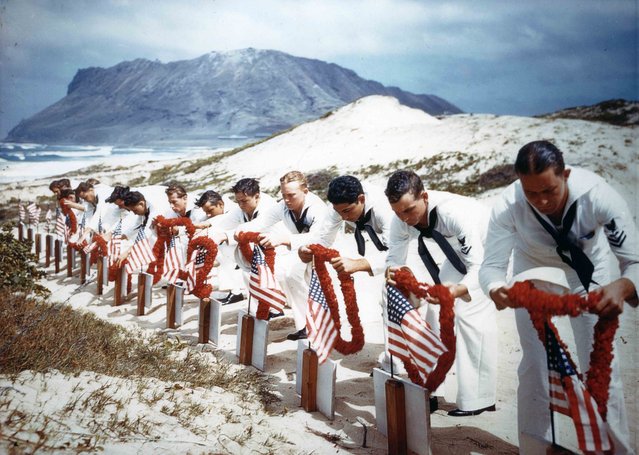
Following Hawaiian tradition, Sailors honor men killed during the Japanese Pearl Harbor attack the previous year on Naval Air Station Kaneohe, Hawaii, U.S. May 31, 1942. The casualties had been buried on December 8, 1941. (Photo by Reuters/U.S. Navy/National Archives)
03 Dec 2016 11:07:00,
post received
0 comments
